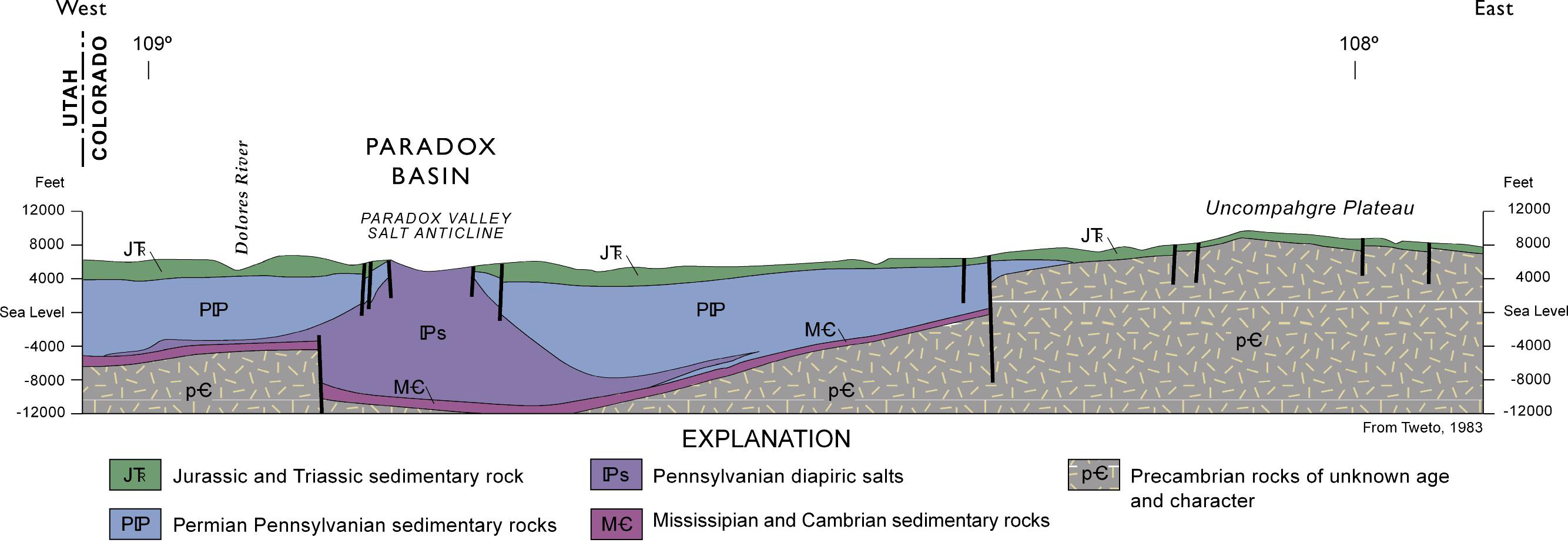Dr. Jon Thorson lectures on the Paradox Basin.

The Paradox Basin of SW Colorado, SE Utah, NE Arizona, and NW New Mexico, formed as a Pennsylvanian foreland basin linked to the uplift of the Uncompaghre Plateau. The Basin was periodically isolated and evaporitic, receiving cyclical deposits of dolomite, gypsum, chloride and sulfate salts, and organic-rich fine clastics. The greater Paradox Basin includes marginal carbonate and clastic facies that were time-equivalent to the evaporite facies, and must be included when the paleo-hydrology of the Basin is studied. The connate fluid history of the Basin fluctuated from extremely concentrated saline brines, through moderately saline seawater, to relatively fresh groundwater, and back again to marine seawater.
Most geologists focus on the rocks of a sedimentary basin, or perhaps on the petroleum fluids, but give little attention to the aqueous fluids that saturate the rocks. The Paradox Basin is a treasure-box of natural resources, with production or exploration for potash, lithium, salt, petroleum, natural gas, sulfur, carbon dioxide, bitumen or tar sands, copper, uranium, and vanadium, all of which can be related to the history of fluid generation, fluid expulsion, and fluid circulation within the Basin. Potash, lithium, and salt resources can be related to the Pennsylvanian brine fluid history of Basin, but their production, is probably restricted by the availability and chemistry of modern groundwater or formation waters. The petroleum products, liquid petroleum, natural gas, sulfur, and bitumen, are first controlled by distribution of petroleum source rocks, but most of their history is controlled by the aqueous fluids that were co-produced under petroleum-generation or petroleum-cracking conditions. The aqueous fluid co-produced during petroleum generation alters the rocks through which it flows, which is a critical rock-preparation step that controls the copper resources of the basin, and possibly controls the source of copper as well. The uranium and vanadium systems of the Basin appear to be controlled by circulation of basinal aqueous fluids and the reduction capacity of hydrocarbons and sour H2S-rich natural gas. The chemistry of modern groundwater and formation waters in the Paradox Basin reflects that long fluid history of the Basin.
Schedule
- 5:30pm – Social
- 6:00pm – Dinner
- 6:30pm – Lecture
Dr. Jon Thorson is a consulting geologist specializing in basin analysis, low-temperature ore deposits in sedimentary basins, and the application of petroleum technology and concepts to mineral exploration. He currently has activities in the USA, Canada, South America and Australia.

